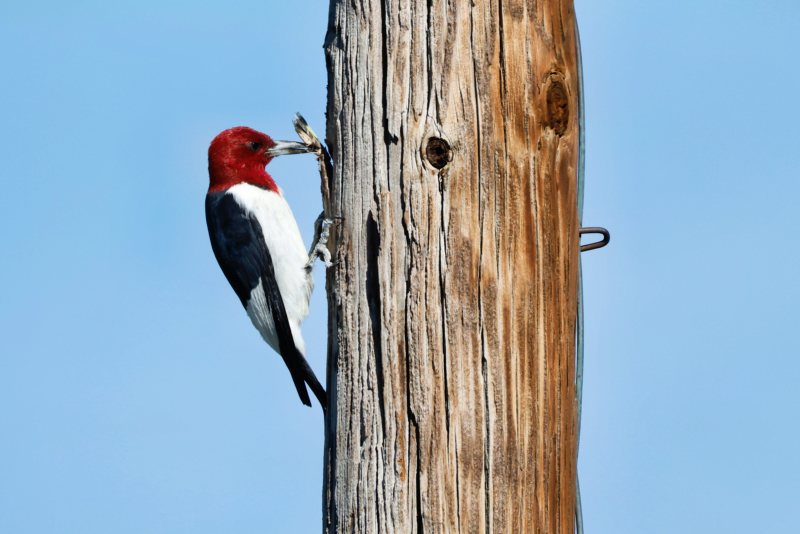While driving a county road near the Black Mesa Wildlife Preserve in Oklahoma, I had an unexpected encounter with one of nature’s clever little strategists, a Red-headed Woodpecker. It wasn’t just any ordinary sighting; this woodpecker had a grasshopper in its beak and was perched on a utility pole right next to the road. As a wildlife photographer, these are the moments I live for, so I quickly parked my truck and began photographing the bird from inside.

I watched as the woodpecker skillfully wedged the grasshopper under a splinter of wood on the pole. What fascinated me most was what happened next, it covered the grasshopper with the splinter, effectively hiding its prize before flying off. This was a perfect example of the Red-headed Woodpecker’s clever food storage strategies, something I’ve written about before (you can read more about it [here]).
Red-headed woodpeckers are renowned for their resourcefulness. They don’t just eat their food immediately; instead, they store it for later, especially during the fall and winter months. This behavior, known as caching, involves stashing a variety of food items like acorns, beechnuts, corn kernels, and insects such as grasshoppers and crickets.
What makes these woodpeckers unique is how they go about storing their food. They carefully place their stashes in crevices of wood posts, tree cavities, and even in human-made structures like under roof shingles or in gate posts. But they don’t stop there, these birds are also known to cover their caches with wood chips or bark, making it harder for other animals to find and steal their food.
This particular woodpecker’s behavior is a reminder of the incredible adaptations wildlife make to survive. By scattering their food caches and covering them up, Red-headed Woodpeckers ensure they have enough to eat when resources become scarce. It’s a brilliant strategy and one that I’m always excited to witness and capture through my lens.
As I watched the woodpecker fly off, I couldn’t help but feel a sense of awe at how even the smallest creatures have such sophisticated survival tactics. Moments like these are what make wildlife photography so rewarding. Every encounter is a lesson in the resilience and ingenuity of nature.
